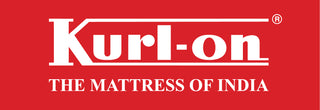
Stock dividends have no impact on the cash position of a company and only impact the shareholders’ equity section of the balance sheet. A stock split may seem similar, but it is different because it dividends existing shares, and a dividend hands out new shares. For example, assume a company has $1 million in retained earnings and issues a 50-cent dividend on all 500,000 outstanding shares.
The Excise Tax on Stock Repurchases: Effects on Shareholder Tax Burdens and Federal Revenues — Penn Wharton … – Penn Wharton Budget Model
The Excise Tax on Stock Repurchases: Effects on Shareholder Tax Burdens and Federal Revenues — Penn Wharton ….
Posted: Thu, 09 Mar 2023 08:00:00 GMT [source]
The adjustment of retained earnings for dividends is a critical step in the accounting process. Once dividends are declared and subsequently paid, the retained earnings balance is decreased to reflect the payout. This adjustment is recorded in the retained earnings account within the equity section of the balance sheet. For cash dividends, the reduction is straightforward, equating to the total cash paid. For stock dividends, the process involves transferring a portion of retained earnings to common stock and additional paid-in capital accounts, depending on the size of the dividend.
How to Calculate Retained Earnings
Whatever the company collects from the sale over and above its par value is put into the company’s additional paid-in capital account on the balance sheet. This account is similar to a capital dividend account which is not reported on financial statements. Additional paid-in capital is an accounting term used to describe the amount an investor pays above the stock’s par value. The par value, which can be for either common or preferred stock, is the value of the stock as stated in the corporate charter. This value is normally set very low, as shares cannot be sold below the par value.
Once we get into the main part of the ore body there, we actually continue to go down on stage one and then do waste stripping on stage two, very similar to what we’ve done on T3. As I’m sure you understand, we continually optimize our mine plans and we do go through a full annual review of our life of mine plans there, even looking at designs. We’ve recently updated staging designs on both open pits and we’re very comfortable that we will deliver first ore as expected at A4. I could say that the board and the executive team were in Botswana circa three weeks ago, looking through all of the opportunities that we see, and there’s plenty to keep us busy there and continue to extract value.
Corporate Capitalization Rules
Our main objective is to generate revenue, generate cash flow, pay down debt. We will manage price volatility through having a strong balance sheet. The electric utility giant hiked its quarterly dividends by 4.4% to $0.59 per share, payable from the fourth quarter of 2023. Fortis currently pays $1.70 in dividends annually, yielding 4.36% on its current price. Furthermore, the company forecasts its dividends to grow at a compounded annual growth rate (CAGR) of 4-6% over the next four years.
- Likewise, both the management as well as the stockholders would want to utilize surplus net income towards the payment of high-interest debt over dividend payout.
- Dividends are a significant factor in the financial strategies of corporations, directly affecting shareholders’ returns and the company’s reinvestment capabilities.
- That’s why you’ll find many of the highest-yielding dividend stocks in the slower-growth sectors like consumer staples, banking, energy, utility, and pharmaceuticals.
- Typically dividend aristocrats that don’t see much value in reinvesting most of their profits because they have saturated their market.
- We exclude these non-operating gains and losses for purposes of calculating certain non-GAAP measures because it provides comparability between periods.
- He currently focuses on the small and micro cap stock market looking for bargains.
Any money the company collects above the par value is considered additional paid-in capital and is recorded as such on the balance sheet. Dividends are a common way for companies to pay back some of their capital to shareholders. Consider it kind of like a reward program for investing in the company. These payouts occur regularly each year, whether that’s quarterly, monthly, or semi-annually. Dividends can be paid out in different forms—in cash or in-kind in the form of stock. Some are debited from a subaccount called the additional paid-in capital.
What Are the Different Types of Dividends?
And we just touched on Black Butte, so I still feel like we have a lot of opportunity embedded within the business to grow value. And I think we happen to be in a commodity which will continue to present tailwinds for us. Look, I think it’s too early to be specific on all of those things, but I just make the general observation that we’re about to hit our sweet spot. We think we’ve established the consistency and predictability in general at MATSA and the way the underground is operating. We’ve done some basic testing there, and it looks like the performance looks very similar to T3. And obviously, we’ve tested it with the intent of replicating the T3 process sheet.
Retained earnings are a crucial measure of a company’s financial health and its ability to generate sustainable growth. Investors and analysts often consider the trend and growth rate of retained earnings over time as an indicator of the company’s profitability, efficiency, and long-term sustainability. Dividends are often seen as a key factor in calculating the total return on investment for shareholders. In addition to any capital gains realized from selling shares at a higher price, dividends provide a regular income stream that can contribute to investors’ overall returns. Retained earnings are the portion of income that a business keeps for internal operations rather than paying out to shareholders as dividends.
Pros and Cons of Cash Dividend Impact on Retained Earnings
You put all that together, the timeframe that we think we’ve got to complete the drilling work on the lower zone, the high grade zone at Johnny Lee, integrate with Lowry, update capital cost estimates. And I think it’s the combination of the do stock dividends decrease retained earnings resource work that’s ongoing, but also the clarification and confirmation of the ability to run the processing facility at faster rate. We touched on it earlier that clearly that provides some upside in the future to metal production.
- When a company consistently retains part of its earnings and demonstrates a history of profitability, it’s a good indicator of financial health and growth potential.
- So if we look at A4, A4 on its own would be unable to fill that mill at a 5.2 million tonne per annum processing rate.
- Dividends are a payout to shareholders in the form of either cash or additional shares on every share they hold.
- That is the closing balance of the retained earnings account as in the previous accounting period.
- Your Bench account’s Overview page offers an at-a-glance summary of your income statement and balance sheet, allowing you to review your profitability and stay on top of your cash flow from month to month.
Part of it is having finalized that very detailed fixed asset register for the Motheo asset following achieving commercial production at the start of the financial year. You’ve seen MATSA is running at a record 4.7 million tonne per annum rate. The differential’s incremental and D&A has a direct link to units of production. And of course, Motheo is running marginally ahead of plan, but there’s more work with Motheo. Look, in short, we’re obviously – the biggest issue on recovery has actually been the instability that we’ve had as we’ve been commissioning the ball mill, working through the misalignment issue that we’ve now resolved.

